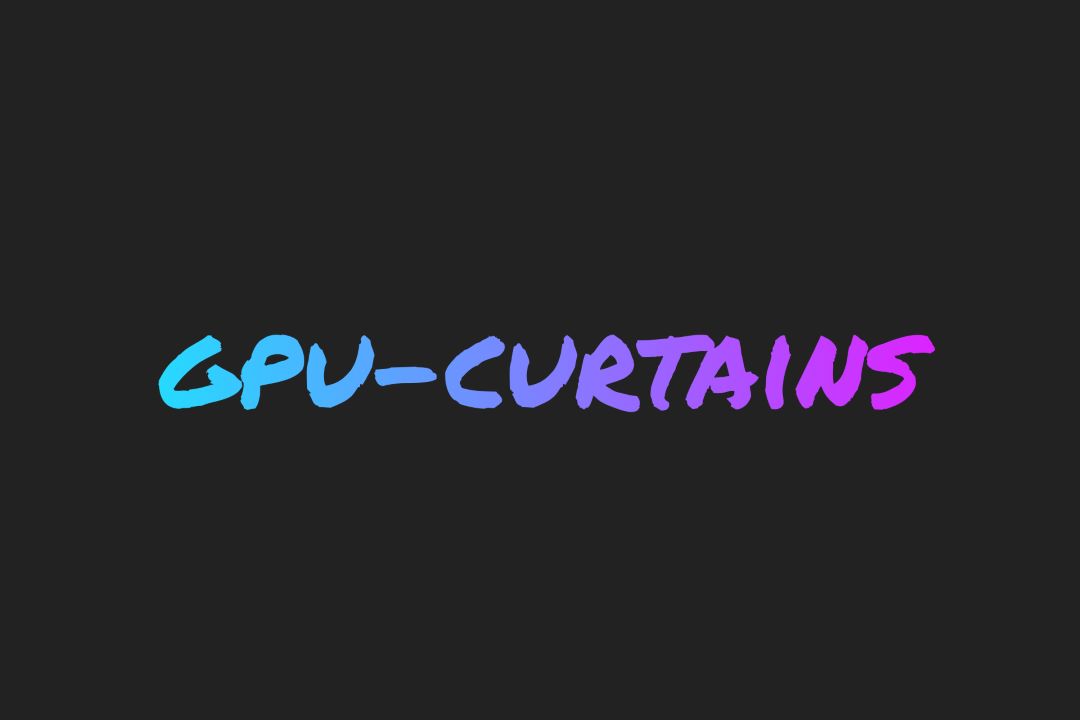Website - Documentation - Examples
⚠️ WIP
gpu-curtains is a small, lightweight 3D WebGPU rendering engine library.
It can be used as a standalone 3D engine, but also includes extra classes designed to turn HTML elements into textured planes or meshes, allowing you to animate them via WGSL shaders.
The project was initially conceived as a WebGPU port of curtains.js. It turned out to be a complete rewrite of the library instead, but with a very similar API.
You can directly download the files and start using the ES6 modules:
import { GPUCurtains } from 'path/to/dist/esm/index.mjs'
window.addEventListener('load', async () => {
// set our main GPUCurtains instance
// it will handle everything we need
// a WebGPU device and a renderer with its scene,
// requestAnimationFrame, resize and scroll events...
const gpuCurtains = new GPUCurtains({
container: '#canvas'
})
// set the GPU device
// note this is asynchronous
await gpuCurtains.setDevice()
// now create some magic!
})You can also use one of your favorite package manager:
npm i gpu-curtains
yarn add gpu-curtains
Finally, you can load the library from a CDN. You should always target a specific version (append @x.x.x) rather than the latest one in order to avoid breaking changes.
import { ... } from 'https://esm.run/gpu-curtains'
// or
import { ... } from 'https://cdn.skypack.dev/gpu-curtains'
// or use another cdn...In a browser, you can use the UMD files located in the dist directory:
<script src="path/to/dist/gpu-curtains.umd.min.js"></script>Or use a CDN:
<script src="https://cdn.jsdelivr.net/npm/gpu-curtains"></script><body>
<!-- div that will hold our WebGPU canvas -->
<div id="canvas"></div>
</body>body {
position: relative;
width: 100%;
height: 100%;
margin: 0;
overflow: hidden;
}
#canvas {
/* make the canvas wrapper fits the viewport */
position: fixed;
top: 0;
right: 0;
width: 100%;
height: 100lvh;
}import { GPUDeviceManager, GPUCameraRenderer, Mesh } from 'gpu-curtains';
window.addEventListener('load', async () => {
// first, we need a WebGPU device, that's what GPUDeviceManager is for
const gpuDeviceManager = new GPUDeviceManager({
label: 'Custom device manager',
})
// we need to wait for the device to be created
// note this is asynchronous
await gpuDeviceManager.init()
// create a camera renderer
const gpuCameraRenderer = new GPUCameraRenderer({
deviceManager: gpuDeviceManager,
container: document.querySelector('#canvas'),
})
// create a cube mesh
const mesh = new Mesh(gpuCameraRenderer, {
geometry: new BoxGeometry(),
})
// this callback is executed
// before the scene actually updates the matrix stack
mesh.onBeforeRender(() => {
// make it rotate
mesh.rotation.x += 0.01
mesh.rotation.y += 0.02
})
})gpu-curtains is a slowly evolving 3D engine but may lack some common features.
If you need a more robust 3D engine that could handle complex glTF or advanced lighting, shading or rendering mechanics, then you should probably go with another library like three.js or Babylon.js.
If you need to debug your scenes, understand in which order they are rendered or inspect your textures, I strongly recommend you to have a look at Brendan Duncan's WebGPU inspector extension.
Contribution are more than welcome! Please refer to the contribution guidelines.
Some parts of the code (mostly the math classes) have been ported or adapted from other existing open source libraries like three.js and glmatrix.
Some examples are also ported and/or inspired by other online open-source WebGL or WebGPU examples. In any case the source should always be credited in the code. If a credit is missing, feel free to reach out or make a PR.
The WebGPU samples, WebGPU fundamentals and WebGPU best practices were very helpful to help with the basic concepts of WebGPU. If you want to understand a bit more how it's working under the hood, do not hesitate to check those.
A big thanks to the members of the WebGPU matrix chan that were always super kinds and very helpful as well.


